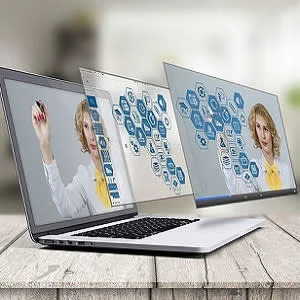Smart technologies, including augmented reality (AR), are changing the way healthcare professionals go about their work. Indeed, many nurses and doctors do interact with AR applications every day to improve patient education and outcomes.
Augmented reality is the use of displays, cameras, and sensors to overlay digital information onto the real world. In contrast to virtual reality (VR), which creates an entirely new world, AR allows us to bring the most useful information from the digital realm into our perception of the environment around us.
"AR is not a new concept, but over the last few years, advances in camera and sensor technology and AR-focused software research have made it practical — we’re still in the early stages of the AR revolution, but this year and into the future, we can expect to see an explosion of AR devices and applications enter the market," says Dean Madison, chief executive officer at TD Madison & Associates.
Google Glass was the first AR platform to get wide public exposure; however, high cost, limited functionality, and perception problems made it less appealing to consumers. Beyond the consumer market, Madison notes, Google Glass has found a home in enterprise and in the healthcare field, demonstrating the importance of AR even at that early stage of development.
AR technologies offer a range of benefits to healthcare workers as well as patients. Education is an obvious application of augmented reality in the healthcare field. For instance, medical staff have to learn a huge amount of information about anatomy and the way the body functions. AR applications give learners the ability to visualise and interact with three-dimensional representations of bodies.
Another AR application which is in use today is vein visualisation, Madison says. Many patients are uncomfortable with being injected or having blood taken, the experience is much worse when it’s difficult to find a vein and the patient has to be “stuck” several times. AccuVein, for example, can project a map of a patient’s veins onto their skin, making it easier for care providers to find the vein first time.
Today, surgeons use several techniques to visualise the area on which they are to operate, but AR, which can project three dimensional representations of the patient’s anatomy into the surgeon’s field of view, is likely to improve accuracy and outcomes for patients.
"However, it’s not only healthcare workers who benefit from augmented reality. It’s also proving hugely useful as a tool for patient education, allowing medical professionals to help patients understand surgical procedures and the way medicines work," Madison explains.
Many companies are now hard at work laying the foundation of the AR revolution. CableLabs, for example, is at the forefront of research into applications of augmented reality. Their vision of the future of AR in the healthcare field — The Near Future, A Better Place — provides a fascinating insight into the way advances in network technology and augmented reality will radically change the quality of life for seniors and others who depend on the healthcare industry, according to Madison.
Source: HealthManagement.org
Image Credit: Pixabay
Latest Articles
Healthcare, augmented reality, smart technologies
Smart technologies, including augmented reality (AR), are changing the way healthcare professionals go about their work. Indeed, many nurses and doctors do interact with AR applications every day to improve patient education and outcomes.










